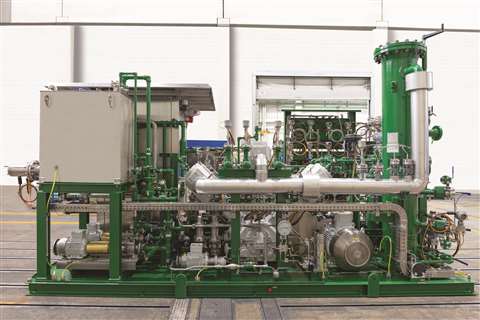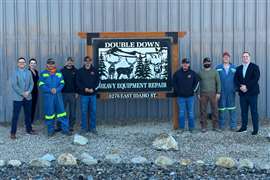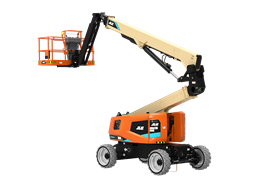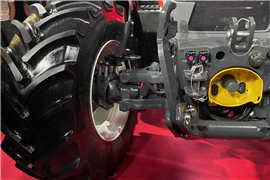Read this article in Français Deutsch Italiano Português Español
LNG shipping growth renews interest in BOG
24 April 2023
Rise of LNG leads to additional offshore efforts
The worldwide growth in the liquefied natural gas (LNG) trade has led to a renewed interest in boil off gas (BOG) compressors used on LNG tankers. Termomeccanica Industrial Compressors (TMIC), for example, has seen its business grow in part because of the renewed demand for screw compressors.
Based in La Spezia, Italy, TMIC manufactures screw block oil injected compressors. The units are sold to packagers in South Korea and Japan, and are ultimately installed on ships built in Asia.
These units take gas that comes from vaporized natural gas on LNG carriers and uses it to drive a steam turbine, which in turn is used to propel the vessel. That gas might otherwise be vented to the atmosphere. Many tankers have dual fuel engines which can use both natural gas and bunker fuel for propulsion, said Gianluca Battistini, senior sales representative at TMIC.
The screw block compressors are certified by the most important certification bodies, including the Korean Register, DNV-GL register, the American Bureau of Shipping, Lloyd’s and Bureau Veritas, he said.
The company started about five years ago and received only a few orders in its first year. Orders have grown dramatically and this year, the company has orders for 30 to 40 more, which will be installed between 20 and 30 LNG vessels between 2022 and 2023, he said.
According to Reuters, China is making fast inroads in the market for newbuild LNG tankers as local and foreign shipowners turn to its shipbuilders for the specialty vessels because long dominant yards in South Korea are fully booked.
Last year, three Chinese shipyards - only one of them having experience building large LNG tankers - won nearly 30% of 2022’s record orders for 163 new gas carriers, claiming ground in a sector where South Korea usually captures most of the business, the news service said.
New unit shows ongoing need for offshore compression
SIAD Macchine Impianti (SIAD MI) recently completed the construction of a vapor recovery unit compressor to be installed on the Firenze, a floating, production, storage and offloading (FPSO) vessel owned by Italy’s Eni.
The compressor, model TS3-1, was supplied to Saipem, an Italian engineering and construction services provider with expertise in the design and execution of large-scale offshore and onshore projects, compresses hydrocarbons with mild traces of H2S (hydrogen sulfide).
Its design required a very high degree of customization because of the special installation conditions and cramped spaces of the FPSO. SIAD MI engineers had to adopt ad hoc solutions; among other things, the careful selection of materials and paints suitable for the marine environment. In addition, to make the package even more compact and to cope with the installation in a hazardous area, a pressurized electrical cabinet was mounted on the compressor base.
Despite the technical complexity of the order, the project was completed in record time. Less than 7 months passed from the awarding of the order to the completion of the compressor, and the contractual date scheduled for its delivery was brought forward by one month.
Within this time frame, the machine also successfully passed the supervision test by a third-party body that issued a certification of suitability for the purpose of supply in the marine environment.
 SIAD Macchine Impianti’s vapor recovery unit was installed on an FPSO vessel owned by Italy’s ENI.
SIAD Macchine Impianti’s vapor recovery unit was installed on an FPSO vessel owned by Italy’s ENI.
To ensure the optimal customer experience and ongoing support, SIAD MI engineers not only followed the construction and delivery phases of the compressor, but will also supervise its installation inside the ship, SIAD MI said.
The ship is being refurbished after more than 10 years of service in Italy (in the Aquila field.) After it is refurbished, it will operate in Africa, off the Ivory Coast. There are already five other SIAD MI compressors fully operational since 2010. The Global Service Division is currently carrying out a refurbishment intervention on 4 of these 5 compression units which concerns specifically:
A Stripping Fuel Gas Booster Compressor Package used to increase the operating pressure of certain atmospheric gaseous streams enabling them for re-use as a main fuel gas source.
A Fuel Gas Compressor Package used for fuel gas compression in order to send the compressed gas to the turbine.
This intervention, which includes the refurbishment of valves, cylinders and pipes plus the recalibration of the instrumentation, will be completed by March. In addition to the refurbishing activities, the SIAD MI’s Global Service Division is working to revamp the units in response to new production requirements from the customer.
Persian Gulf
Offshore compression is a major source of income for Saipem. Late last year, Qatargas awarded a $4.5 billion contract to the company to construct two offshore natural gas compression complexes in the North Field offshore Qatar.
The contract marked the largest single offshore contract by total value in the company’s history, Saipem said. The work includes engineering, procurement, fabrication and installation of two offshore natural gas compression complexes designed to sustain production at the North Field.
North Field Production Sustainability Offshore Complexes Project, as the project is known, includes two of the largest fixed steel jacket compression platforms ever built, flare platforms, interconnecting bridges, living quarters and interface modules.
Exploration engineers first discovered natural gas off Qatar’s northeast coast in the early 1970s and after an exploration period of 14 years, the country realized it had one of the largest non-associated natural gas fields in the world. Recoverable reserves exceeded 900 Tcf, about 10% of the world’s known reserves.
The compression contract granted to Saipem is part of a larger $30 billion expansion of the North Field. The North Field Expansion (NFE) development plan includes six mega liquefied natural gas (LNG) trains which is going to ramp up Qatar’s liquefaction capacity from 77 million tonnes per annum (mtpa) to 126 mtpa, which is approximately 64% production increase by 2027.
Saipem’s most recent contract comes two years after a previous award related to offshore facilities for extraction and transportation of natural gas from the same field.
The North Field is the southern part of a giant natural gas field that Qatar shares with Iran. The Iranian side of the field is known as South Pars. Qatar Energy announced plans to expand the field in April 2017. First gas from the project is expected to start operations by 2025. Total production is expected to be 1.4 million barrels of oil equivalent per day.
Caption 1: SIAD Macchine Impianti’s vapor recovery unit was installed on an FPSO vessel owned by Italy’s ENI.
Caption 2: The worldwide growth in the LNG trade has led to a renewed interest in boil off gas (BOG) compressors used on LNG tankers. (Photo: Adobe.)
POWER SOURCING GUIDE
The trusted reference and buyer’s guide for 83 years
The original “desktop search engine,” guiding nearly 10,000 users in more than 90 countries it is the primary reference for specifications and details on all the components that go into engine systems.
Visit Now
STAY CONNECTED




Receive the information you need when you need it through our world-leading magazines, newsletters and daily briefings.
CONNECT WITH THE TEAM













